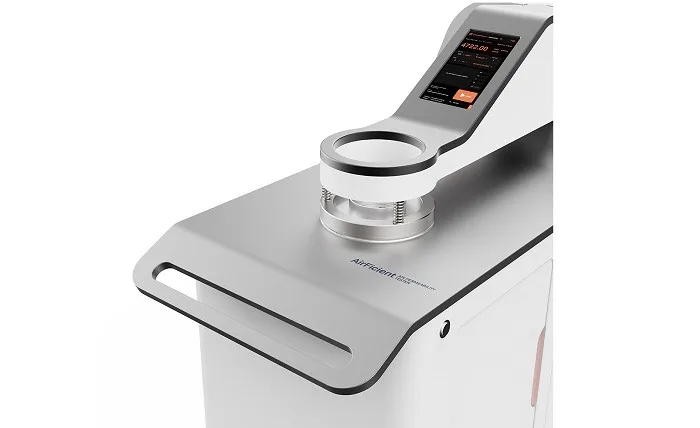Breathe it in, my friends! Today, we’re diving deep into the fascinating world of fabric air permeability. Wait, don’t click away just yet! Trust me when I say that this topic is more thrilling than you might think. Ever wondered why some fabrics feel light and airy while others leave you feeling suffocated? It all comes down to one crucial factor: air permeability. In this blog post, we’ll unravel the science behind fabric’s air permeability and explore how it affects our comfort levels and overall garment experience. So buckle up (or should I say unbutton?), because things are about to get breathable in here!
What is fabric air permeability?
Picture this: you slip into a new shirt, excited about its vibrant color and stylish design. But after just a few minutes of wear, you start to feel uncomfortably hot and sweaty. What gives? Well, my friends, it all comes down to fabric air permeability.
Fabric air permeability refers to the ability of a material to allow air to pass through it. In simpler terms, it determines how breathable or stifling your clothing feels against your skin. You see, fabrics aren’t just there for show; they play a crucial role in regulating our body temperature and ensuring comfort throughout the day.
So how is fabric air permeability measured? Enter the “Porosity Test.” This test measures the amount of airflow that can pass through a specific area of fabric in a given time frame. The higher the airflow, the more breathable and air-permeable the fabric is considered to be.
Several factors affect fabric air permeability. Fiber type plays a significant role – natural fibers like cotton and linen tend to have better breathability compared to synthetic counterparts such as polyester or nylon. Additionally, weave structure also affects permeability; looser weaves allow more airflow than tightly woven fabrics.
Now let’s talk benefits! Air-permeable fabrics offer numerous advantages beyond mere comfort. They help wick away moisture from our bodies, keeping us dry even during intense physical activity or hot weather conditions. Increased breathability also prevents bacteria growth and unwanted odors – say goodbye to those embarrassing sweat stains!
Different needs call for different fabrics with varying levels of air permeability. For outdoor enthusiasts or athletes seeking optimal performance, lightweight mesh fabrics provide excellent ventilation while still offering protection from sun exposure.
On the other hand, if you’re looking for everyday wear that strikes a balance between style and breathability (without sacrificing modesty), consider opting for natural fibers like cotton or bamboo blends—they’ll keep you feeling fresh all day long!
Now that we know the importance of fabric air permeability, caring for these breathable
How is fabric air permeability measured?
Fabric air permeability is an essential property that determines how well a fabric allows air to flow through it. This measurement plays a crucial role in various industries, including fashion, sports apparel, and outdoor gear. So, how exactly is fabric air permeability measured?
To determine fabric air permeability, professionals use a device called a “permeometer.” This instrument works by subjecting the fabric sample to a specific amount of pressure and measuring the rate at which air passes through it. The unit used to quantify this airflow is called “cubic feet per minute” (CFM).
During the testing process, the fabric sample is securely clamped between two chambers in the permeometer. One chamber contains pressurized air while the other serves as an outlet for airflow. By applying differential pressure across the material, scientists can accurately measure its resistance to airflow.
It’s important to note that different standards exist for measuring fabric air permeability depending on industry requirements. For instance, ASTM D737 and ISO 9237 are commonly used methods in textile testing laboratories.
By understanding how fabric air permeability is measured, manufacturers can choose materials that meet their desired specifications and performance requirements. Whether aiming for enhanced breathability or weather resistance, accurate measurements help ensure optimal results in product development.
Remember: Measuring fabric air permeability involves complex scientific techniques that require specialized equipment and expertise!
Factors that affect fabric air permeability
Factors That Affect Fabric Air Permeability
When it comes to fabric air permeability, there are several factors that can influence its effectiveness. One of the key factors is the construction of the fabric itself. Fabrics with a looser weave or knit tend to be more breathable and allow for better airflow.
Another important factor is the type of fiber used in the fabric. Natural fibers like cotton and linen are known for their breathability, while synthetic fibers like polyester may not offer as much airflow.
The thickness and weight of the fabric also play a role in determining its air permeability. Thinner fabrics generally have better breathability than thicker ones, as they allow for easier passage of air molecules.
Additionally, finishes applied to fabrics can impact their air permeability. Certain treatments, such as water-repellent coatings or flame retardants, may reduce breathability by blocking airflow through the fabric.
Environmental conditions can affect how well a fabric allows air to pass through it. Factors like humidity and temperature can impact how easily moisture evaporates from the surface of a fabric, influencing its overall breathability.
Considering these various factors will help you choose fabrics that provide optimal comfort and ventilation based on your specific needs and preferences. Whether you’re looking for breathable activewear or lightweight bedding materials, understanding what affects fabric air permeability is key in making informed choices about your textiles.



